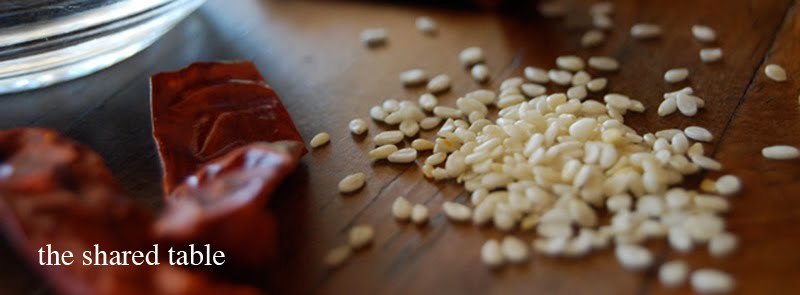When I lived in India, one of my least favorite spices was cardamom, which might be considered India’s national spice if such a title were being handed out. Ubiquitous across the subcontinent, cardamom finds its way into everything from masala chai to Moghlai food, from desserts to paan. Most Indians seem to love it but I shudder every time I bite into a cardamom pod or even seed. The flavor of elaichi is so intense it makes my mouth numb, rather like Szechuan peppercorns do.
Ironically, I learned to love its flavor only after I moved to North America. That was where I discovered it had another name too: Vanilla of India. How appropriate, I thought. The spice is native to my country but its sweetness is comparable to that of the vanilla bean, the most commonly used dessert flavoring in the West.
Both cardamom's green and black varieties are supposed to have originated where I come from, the Western Ghats. According to the Indian Spices Board, cardamom is a “perennial, herbaceous, rhizatomous plant ... often referred to as the Queen of Spices” (http://www.indianspices.com/spice-catalog/cardamom-small-1). India is still one of the largest producers ... but Guatemala, Sri Lanka, and Burma also produce it as well.”
"Yes, it is," she said but explained that Sindhis added it to this khichadi because both pepper and cardamom are good for stomach ailments. Sure enough, I recovered almost immediately after eating the nourishing and therapeutic dish.
According to http://cardamomspice.com, a website devoted to the spice, cardamom was used by the ancient Greeks in their cooking when Alexander the Great took the plant to Europe after his invasion of northwestern India in the 4th century BCE. The Romans followed suit and the spice made its way deep into Europe, becoming popular in continental kitchens from Sweden to Spain.
In Indian cookery, I find that cardamom is too prevalent for my taste; it's rare to find a dessert that isn’t flavored with its aromatic sweetness, be it sevayachi kheer (vermicelli kheer) or gulab jamun (milk dumplings in a cardamom-rose water syrup). Then one day, a friend introduced me to a Swedish bakery in my small California town. There I discovered Semla (the singular is Semlor) cardamom-custard buns that were baked for Lent, the forty days of fasting before Easter.
 |
Swedish Semla at Berolina Bakery, Montrose, CA |
I fell in love with the delicate dough, almond paste filling and light whipped cream. And what was that floral aroma? I wondered. I was surprised to learn that it was cardamom because it was so delicate compared to what I was used to. What was different?
It took several years of eating and baking northern European buns and pastries like Semla and the Scandinavian Julekake (Christmas cake) for me to understand. In India, cardamom is often used whole or coarsely ground. Even when ground fine, it remains in the forefront of a dish where it can get between the teeth. On the other hand, European baked goods use a fine cardamom powder and something about mixing the spice into a dough mutes its intensity. I prefer this delicate, nuanced taste.
I started making my own version of cardamom cookies every winter. I call them Vanilla of India shortbread. They are buttery, almond flour cookies flavored with a good measure of powdered cardamom. For a pretty Indian hue, I add Calvert’s rose syrup which turns them a delicate pink.
Since many people in India may not have an oven in which to bake cookies, I adapted the recipe into an easy milkshake. IF you would like to try making the cookies, however, please email me at kaumudi@un-curry.com and I will gladly share the recipe. You can also try making the milkshake below. Let me know how it turns out.
Vanilla of India Milkshake
This easy recipe is a great, on-the-go breakfast or after-school drink for kids. The sweet perfume of roses pairs beautifully with cardamom for a sweetly refreshing sip.
8 oz milk
1 ripe banana, peeled
11/2 teaspoons sugar
1/4 cup ground almonds
3/4 teaspoon powdered cardamom
1 teaspoon rose syrup (optional)
1/2 cup crushed ice
Combine all the ingredients in a blender and whip till smooth and liquefied. Pour into two to three tall glasses and garnish with a pinch of powdered cardamom.
